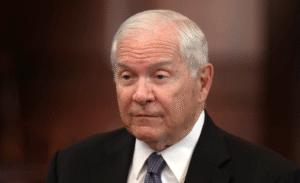Trump’s “Liberation Day” Tariffs Ruled Illegal—a Ruling That Could Reshape Executive Power
When a federal appeals court ruled that former President Trump exceeded his legal authority in imposing sweeping “Liberation Day” tariffs, global markets, businesses, and constitutional watchers collectively held their breath. This ruling poses critical questions not only about trade policy but about the evolving boundary between executive action and legislative power.
The decision, delivered in a 7–4 vote by the U.S. Court of Appeals for the Federal Circuit, took aim squarely at Trump’s reliance on the 1977 International Emergency Economic Powers Act (IEEPA) to justify broad-based tariffs. It marked a stark judicial rebuke, signaling that using emergency powers to reshape trade without clear congressional approval oversteps constitutional bounds.
Departure from Emergency Tradition
Presidents have invoked IEEPA during foreign conflicts or crises, like Carter’s 1979 sanctions on Iran or Bush’s post-9/11 restrictions. Trump’s use diverged: he declared a national economic emergency based on trade deficits and imposed a baseline 10% tariff on most imports—dubbed “Liberation Day”—with steep additional tariffs targeting specific countries.
That move sparked immediate controversy. Critics, including multiple federal courts, found the executive invocation lacked the necessary connection to national security, observation of legislative prerogative, and adherence to the major questions doctrine.
Legal and Market Uncertainty
The appeals court confirmed lower court findings from the U.S. Court of International Trade and the Washington D.C. district court that the tariffs exceeded executive authority. The ruling remains stayed until October 14, allowing the administration time to seek review by the Supreme Court.
Markets largely held ground—US futures traded steadily—likely because the tariffs remain in effect for now. But the long shadow remains: businesses and consumers face uncertainty, and the treasury could be on the hook for billions should the Supreme Court affirm the ruling.
Political Backlash and Trump’s Response
Trump responded strongly, calling the court “highly partisan” and warning that lifting the tariffs would trigger catastrophic economic fallout. He claimed rescinding them could risk “$15 trillion in investment” and reduce the U.S. to a “Third World nation.” The Justice Department echoed concern over the loss of revenue, citing $159 billion in tariff collections by July.
This political theatrics underscores the stakes—not just for policy, but for messaging. It taps into populist narratives of protectionism while framing the judiciary as obstructionist.
Constitutional Stakes and Trade Authority
At the heart of this legal battle lies the separation of powers: Congress holds the power to regulate tariffs, not the executive. The appeals court underscored that Congress did not authorize blanket tariff authority under IEEPA—a statutory gap the court declined to fill.
Looking forward, if the Supreme Court affirms, this could curb future attempts by presidents to label economic conditions emergencies as justification for sweeping policy shifts—potentially reasserting legislative oversight in trade matters.
Global and Business Fallout
Tariffs were aimed at a wide array of countries—China, Canada, Mexico, India, and beyond—some facing levels as high as 50 percent. The ruling raises questions about renegotiation, refunds, and future trade tensions.
Companies face a precarious future: Levi’s, for instance, blamed growing anti-American sentiment linked to Trump’s tariffs for headwinds in the UK market—a warning sign that public opinion can shift consumer behavior.The Guardian
What Comes Next: Appeals and Strategy
The administration is set to appeal to the Supreme Court, with legal experts monitoring whether the “major questions doctrine” will factor into the Justices’ deliberations.
Meanwhile, the government may pursue alternative tariff authorities—like Section 301 or Section 232 of earlier trade acts—to reimpose tariffs under narrower, legislatively sanctioned frameworks.Reuters
Conclusion
This ruling isn’t just a win for small importers or constitutional purists—it could reshape the balance of power between the presidency and Congress, especially in trade matters. Whether markets, businesses, or lawmakers will adapt to this shift remains uncertain until the Supreme Court weighs in. But one thing is clear: the debate over executive authority and economic emergency powers is far from over.
Subscribe to trusted news sites like USnewsSphere.com for continuous updates.





